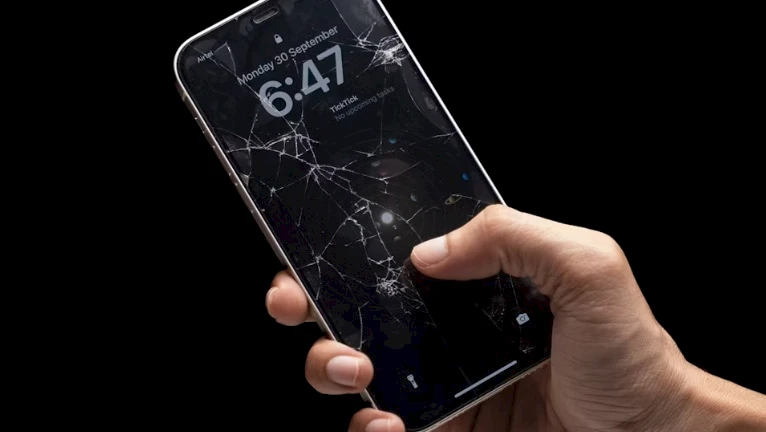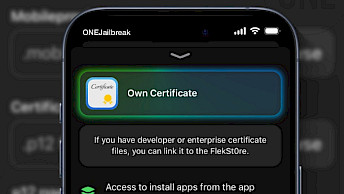Can Your Phone Handle Real Life? How to Make It More Resilient

Smartphones have become essential tools for modern life. We use them to navigate unfamiliar roads, manage our finances, stay connected with loved ones, capture memories, and—let’s face it—scroll through endless content.
But for something so central to daily life, the average smartphone isn’t exactly built to handle every environment it’s likely to encounter.
Drops, spills, temperature swings, dead batteries, and cracked screens are all common hazards that can turn a reliable phone into an expensive paperweight.
And while manufacturers have made strides in durability over the years, a little extra protection goes a long way—especially if you rely on your device for work, travel, or outdoor adventures.
If you've ever found yourself with a dead phone in the middle of nowhere or regretted skipping that $30 case, this guide is for you.
Start with Reliable Power Options
Let’s begin with the most basic—and often overlooked—requirement for a functional phone: power.
A fully charged device isn’t much good if it drains halfway through your day and you have no way to recharge it. This is particularly frustrating when traveling, hiking, or working remotely where outlets aren’t guaranteed.
While most people carry a power bank these days, not all backup options are created equal.
Enter the portable power station. Unlike traditional power banks, portable power stations offer much higher capacity and can charge multiple devices at once, including laptops, tablets, and yes—your phone.
These stations are particularly useful during extended power outages or trips where you’ll be off-grid for days. With a good station, you don’t just stay connected—you stay productive.
Use a Case that Matches Your Lifestyle
Not all phone cases are created for the same purpose. Some are stylish, slim, and barely there. Others look like they belong in a construction zone.
If you’re prone to dropping your phone—or live an active lifestyle that includes hiking, biking, or working outdoors—a rugged case is worth the extra bulk.
Some brands specialize in shock-resistant cases that pass military-grade drop tests. Many are also water-resistant or feature built-in screen protectors.
On the other hand, if you’re mostly desk-bound or working indoors, you might get away with a slimmer model that still offers reinforced corners. The key is to choose a case that protects without getting in your way.
Protect the Screen like It’s Your Eyes
Your phone’s screen is the most fragile and expensive part of the device. Even one careless drop can result in cracks that impact usability—or a full replacement if the display is too damaged to repair.
A tempered glass screen protector is a small investment that can save hundreds in repair costs. These protectors are far superior to plastic films, offering better clarity and significantly more impact resistance.
Be sure to clean your screen properly before applying one to avoid bubbles or dust underneath. And if it cracks? Replace it. A damaged screen protector doesn’t help anyone.
Defend Against Water and Dust
Many modern smartphones come with an IP rating—a standard that tells you how well the device resists water and dust. For example, IP68 is common for high-end phones and means the device can withstand submersion in water up to a certain depth for a specific time.
But even IP-rated phones aren't invincible. Seals can weaken over time, and tiny cracks from drops can let moisture in. That’s why water exposure should still be minimized whenever possible.
If you're heading somewhere wet, consider using a waterproof pouch or dry bag. These accessories are inexpensive and often include touch-sensitive screens so you can still use your phone without removing it.
And keep in mind: saltwater is far more corrosive than freshwater. Even if your phone survives a dip in the sea, rinse it with clean water afterward to avoid long-term damage.
Guard Your Data Before Disaster Strikes
Resilience isn’t just about physical protection—it’s also about safeguarding your data.
If your phone is lost, stolen, or completely fried in an accident, would you lose important information? For many people, the answer is yes.
Set your phone to back up automatically, either through iCloud (for iPhone users) or Google Backup (for Android). This includes contacts, photos, texts, and app data. You can also use services like Dropbox to sync your most important documents.
Encryption and remote wipe features add another layer of protection. With these enabled, you can remotely erase your phone if it falls into the wrong hands.
Watch Out for Extreme Temperatures
Smartphones are sensitive to heat and cold—far more than many users realize.
Leaving your device on a dashboard in direct sunlight can cause it to overheat, shut down, or even damage the battery. On the flip side, freezing temperatures can shorten battery life and make your touchscreen sluggish or unresponsive.
Try to keep your phone within its recommended temperature range. If you're outside for long periods, carry your phone in a pocket close to your body to help maintain a stable temperature. In hot climates, avoid charging your phone in direct sunlight, as the process generates additional heat.
Streamline Your Software
A cluttered phone runs slower, crashes more often, and burns through battery life at a faster pace.
Take time every few weeks to delete unused apps, clear cache files, and install the latest software updates. These updates often include security patches and performance improvements that help your phone run more efficiently.
You can also optimize your settings for durability. Lowering screen brightness, turning off background app refresh, and enabling battery saver mode can all reduce strain on the device—and on you.
Invest in a Solid Mount or Holder
If you drive regularly or use your phone for GPS navigation, don’t risk propping it up in a cup holder or balancing it on the dash. Not only is this dangerous, but one sharp turn or stop can send your device flying.
There are countless mount options for bikes, cars, and even backpacks. Choose one that keeps your phone secure and in view without obstructing your controls. For off-road trips or rough terrain, prioritize models with anti-vibration or shock-absorbing features.
Check Your Insurance and Warranty Coverage
Even with the best protection, accidents can still happen. A drop down the stairs, a spilled drink, or a moment of distraction can be all it takes.
Carrier insurance or third-party coverage plans can ease the pain of replacement. Just make sure you know what’s covered—and what isn’t. Some plans cover theft and water damage, while others exclude those completely.
If your phone is new, check whether it’s still under warranty. In some cases, repairs for common issues are free if they fall within that period.
Because Life Isn’t Always Gentle
Your phone goes everywhere with you—from airport terminals and coffee shops to hiking trails and construction sites. It’s your camera, your assistant, your wallet, and your lifeline.
Making it more resilient isn’t just about preventing physical damage. It’s about building a system that keeps you connected when things go wrong.
A phone that’s powered, protected, and backed up is one less thing to worry about—so you can focus on living life, not tiptoeing around your tech.





